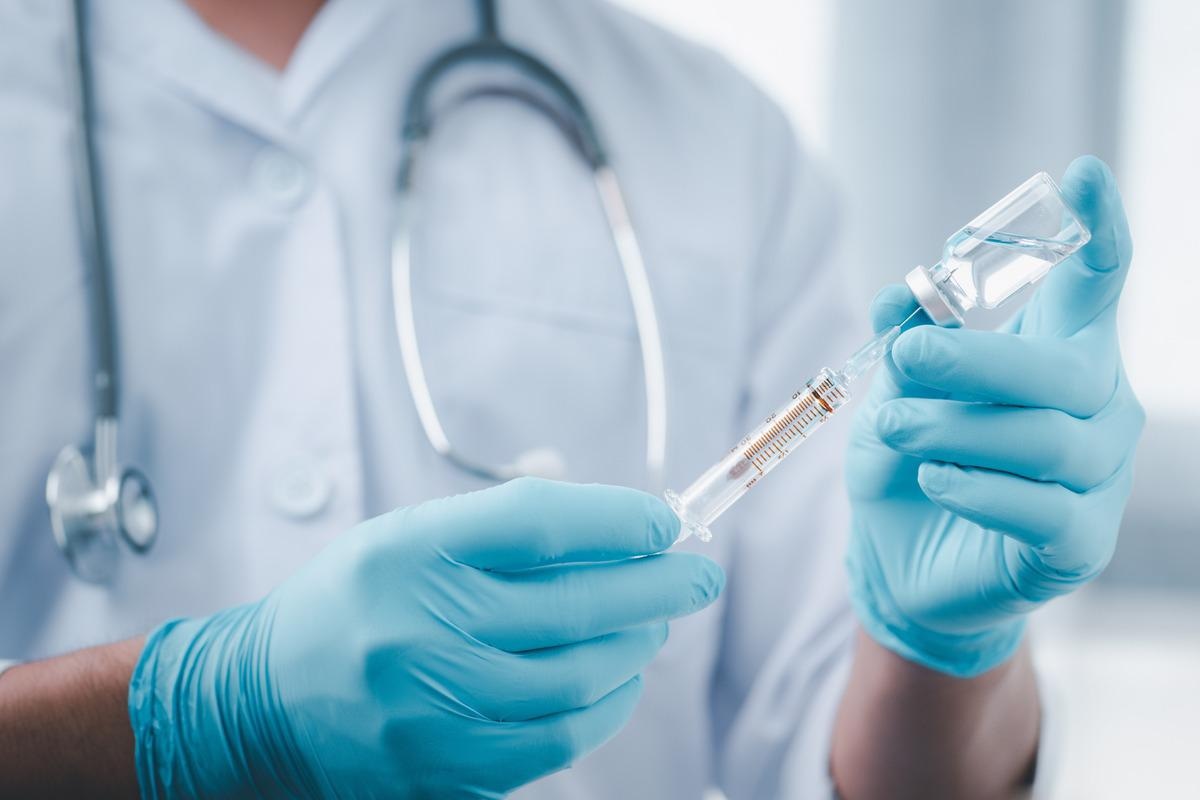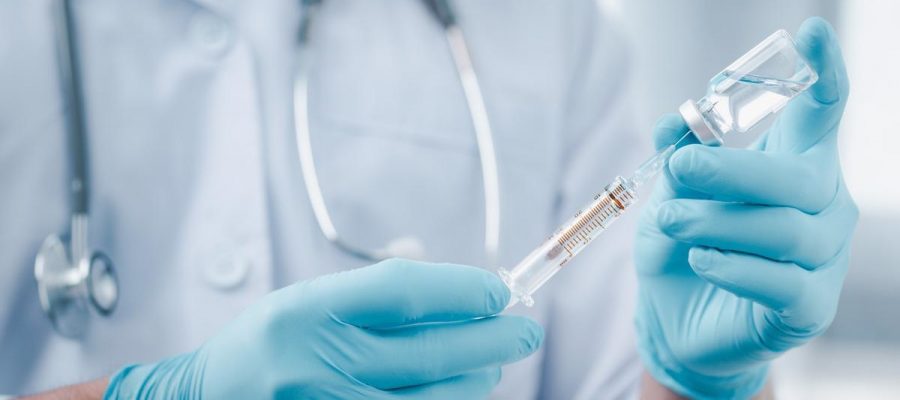In a recent study posted to the medRxiv* preprint server, a team of researchers assessed the serological responses to secondary booster doses of Pfizer's Comirnaty (BNT162b2) and Moderna's Spikevax (mRNA-1273) vaccines against coronavirus disease 2019 (COVID-19).

The observation that immunity against severe acute respiratory syndrome coronavirus-2 (SARS-CoV-2) wanes after a certain period prompted calls for administering additional vaccine doses to boost the immunity. Both infection- and vaccination-induced protective immune responses decline to a certain degree over time.
Initially, in the United Kingdom (UK), a single dose of the BNT162b2 vaccine or a half dose of the mRNA-1273 vaccine as a booster dose was approved for people over 50 years. However, the emergence of the novel SARS-CoV-2 Omicron variant resulted in a massive surge in COVID-19 infections, and therefore, the booster vaccination requirement was expanded for all adults (> 18 years).
The study
The present study determined antibody kinetics and trajectories for up to six months following the booster dose administration. A UK Health Security Agency initiative called the COVID-19 vaccine responses after extended immunization schedules (CONSENSUS) evaluated vaccine responses with modified intervals between two BNT162b2 or ChAdOx1 vaccine doses. Immunocompetent people were recruited for the CONSENSUS study to donate serial blood specimens after the first dose of either the BNT162b2 or ChAdOx1 vaccine. Participants received two BNT162b2 doses in less than 30 days (BNT162b2-control) or ≥ 30 days (BNT162b2-extended) and two ChAdOx1 doses ≥ 30 days apart (ChAdOx1-extended). Samples were obtained from the participants of the CONSENSUS cohort study pre- and post-boosting with either Comirnaty or Spikevax vaccine.
Serological analyses were performed to detect antibodies against nucleocapsid (N) and spike (S) proteins with Elecsys anti-SARS-CoV-2 total and anti-SARS-CoV-2 S immunoassays, respectively. The presence of anti-N antibodies ≥ 0.4 arbitrary units (au)/ml was adjudged due to COVID-19 infection, while anti-S antibodies ≥ 0.8 au/ml were considered vaccine- or infection-induced. After vaccination, samples with anti-N antibodies were viewed as breakthrough infections and not investigated any further. S antibody geometric mean levels (GMLs) and geometric mean ratios (GMRs) of responses were computed. S antibody trajectories were modeled using a mixed-effects linear regression method.
Results
Around 888 participants were recruited for this study. Serum samples for up to 14 weeks post-booster dose were available for about 471 candidates. Participants were stratified according to the combination of primary and secondary (booster) vaccinations (denoted primary/secondary vaccine henceforth). Of the 471 subjects, 108 were grouped into ChAdOx1-extended/BNT162b2 category, 68 in ChAdOx1-extended/mRNA-1273, 219 in BNT162b2-extended/BNT162b2, 10 in BNT162b2-extended/mRNA-1273, and 66 in the BNT162b2-control/BNT162b2 category.
The authors noted an increase in GMLs after booster dose for all primary and booster vaccines in infection-naïve participants. Pre- and post- booster analyses revealed an 83.4-fold rise in GMLs for BNT162b2-control (primary immunization) and BNT162b2 booster recipients. ChAdOx1-extended participants boosted with BNT162b2 demonstrated a 58.5-fold increase in GMLs, and a 15.3-fold increase was observed for BNT162b2-extended candidates receiving the same vaccine as a booster.
Participants with a COVID-19 history before primary vaccination showed higher GMLs than infection-naïve individuals, but GMRs were higher in naïve participants after booster vaccination. GMLs increased five-fold each for BNT162b2-control/BNT162b2 and BNT162b2-extended/BNT162b2 candidates, and 13.5-fold for ChAdOx1-extended/BNT162b2 recipients.
GML peak was observed two to four weeks post-booster administration for all subjects. GMLs began declining five weeks after boosting and decreased by 65% in the BNT162b2-extended/BNT162b2 cohort, 49% in ChAdOx1-extended/BNT162b2 participants without past infection. In infected individuals, GMLs declined by 48% in the ChAdOx1-extended/BNT162b2 group and 38% in the BNT162b2-extended/BNT162b2 group.
Conclusions
This study offered insights into serological changes following a COVID-19 vaccine booster dose. It demonstrated that boosting results in higher immune responses than after the primary vaccination. Five weeks post-booster vaccination, anti-S antibody responses showed a downward trend. People with hybrid immunity, i.e., infection- and vaccination-induced immunity, demonstrated less waning of the anti-S response.
Despite enhancing the immunity with a booster dose, antibody responses decline after a certain period. Should another novel mutant SARS-CoV-2 emerge in the future, these findings may be helpful to optimize the appropriate interval for a fourth dose, especially for the vulnerable (comorbid) populations.
Notably, the present research did not work on vaccine-breakthrough cases and cellular immune responses, thus warranting further investigation. Furthermore, participants with prior infection were infected with either the ancestral SARS-CoV-2 strain or the Alpha variant. Therefore, future studies should also examine the post-booster immune responses in subjects infected with other prominent SARS-CoV-2 variants like Beta and Delta.
*Important notice
medRxiv publishes preliminary scientific reports that are not peer-reviewed and, therefore, should not be regarded as conclusive, guide clinical practice/health-related behavior, or treated as established information
- Georgina Ireland, et al. (2022). Serological responses and six-month trajectories to COVID-19 Comirnaty and Spikevax booster vaccine, September 2021 to January 2022, London, United Kingdom. medRxiv. doi: https://doi.org/10.1101/2022.02.17.22271126 https://www.medrxiv.org/content/10.1101/2022.02.17.22271126v1
Posted in: Medical Science News | Medical Research News | Medical Condition News | Disease/Infection News | Healthcare News
Tags: Antibodies, Antibody, Blood, Coronavirus, Coronavirus Disease COVID-19, covid-19, immunity, Immunization, Immunoassays, Omicron, Research, Respiratory, SARS, SARS-CoV-2, Severe Acute Respiratory, Severe Acute Respiratory Syndrome, Syndrome, Vaccine

Written by
Tarun Sai Lomte
Tarun is a writer based in Hyderabad, India. He has a Master’s degree in Biotechnology from the University of Hyderabad and is enthusiastic about scientific research. He enjoys reading research papers and literature reviews and is passionate about writing.
Source: Read Full Article
